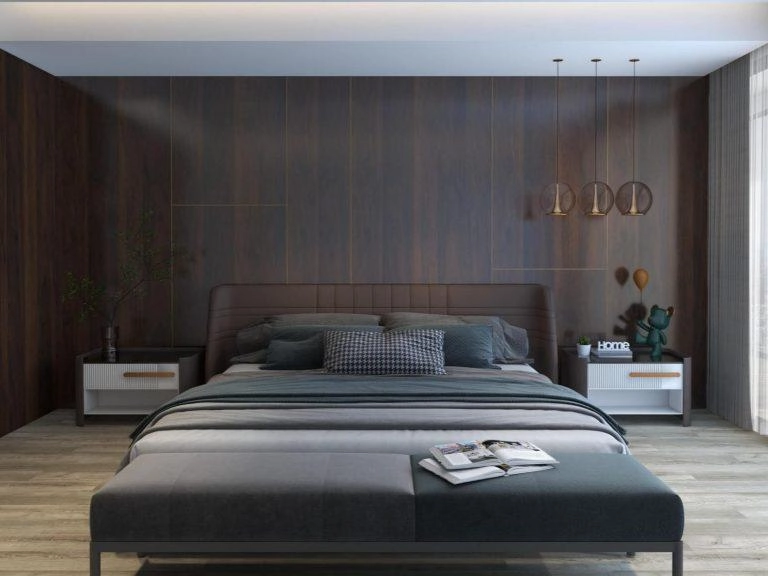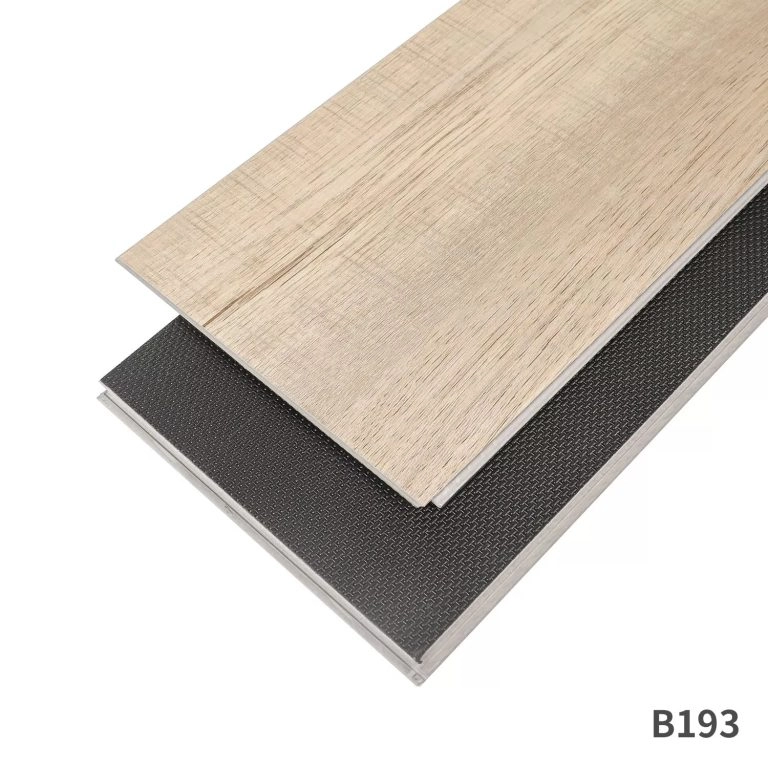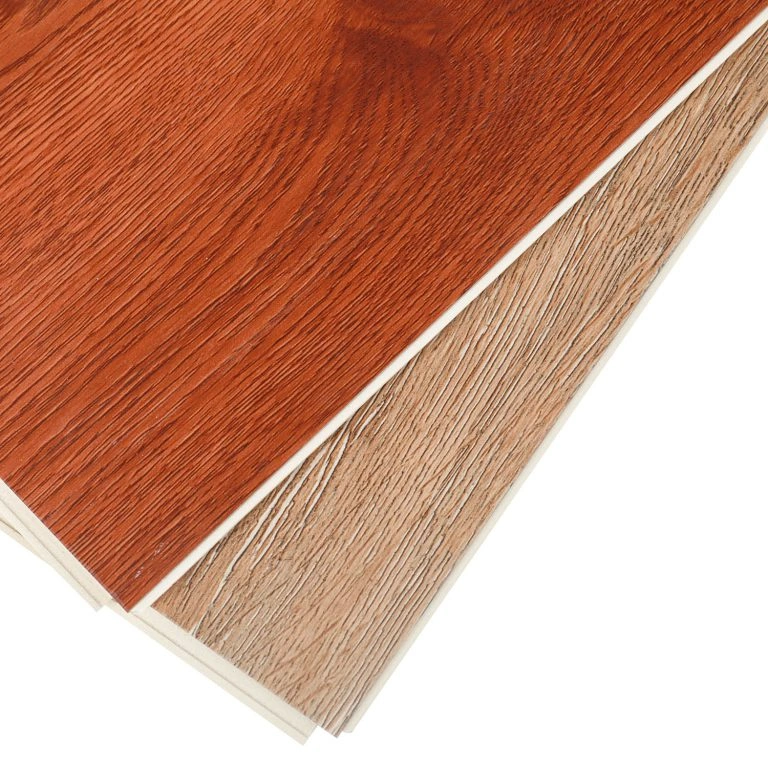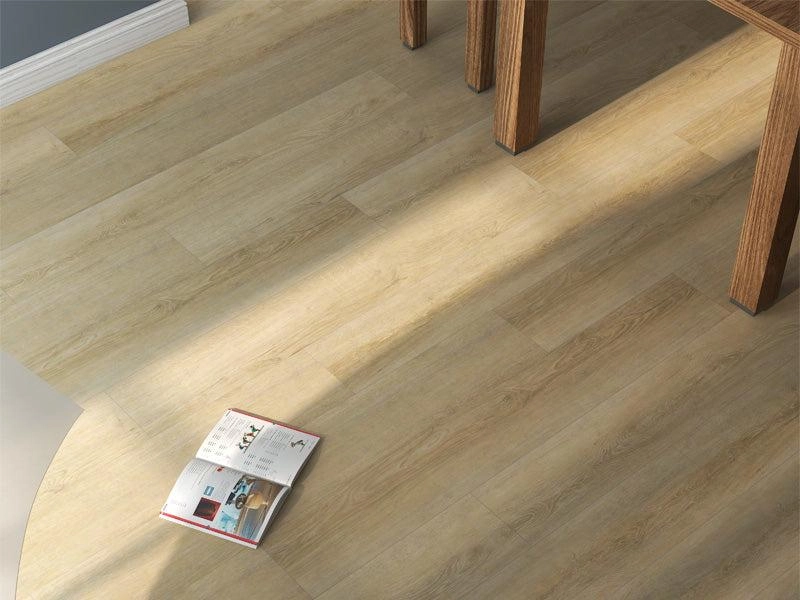In modern interior design, materials aren’t judged only by how they look anymore. They have to work harder—last longer, handle daily wear, and still fit the aesthetic. That’s one reason WPC (Wood Plastic Composite) and SPC (Stone Plastic Composite) have been showing up almost everywhere, from home remodels to busy commercial floors.

WPC carries the familiar warmth of wood but drops the usual problems—no warping, no splinters, no drama after a humid summer. SPC takes a different route: it feels cooler and more solid, built to handle crowds, rolling chairs, or even a spilled drink without complaint.
Walk barefoot on WPC and you’ll notice the slight give underfoot, almost like wood that’s been treated right. SPC, meanwhile, keeps that firm, steady feel no matter the temperature. Different personalities, same purpose: to make spaces look good and hold up to real life.
WPC and SPC Basics
WPC mixes wood powder, plant fibers, stone powder, and polymer resin, then goes through high-temperature molding. Additives like flame retardants and stabilizers help it stay firm and smooth. The final look copies real timber, but the performance belongs to a composite.
SPC changes the formula — less wood, more stone. Its mineral core makes it rigid and dimensionally stable, ideal for heavy-traffic floors.
Quick recap:
- WPC feels soft, absorbs sound, and suits living rooms or offices.
- SPC is harder and denser — perfect for kitchens, shops, and hallways.
Many homeowners still mix them up. The real breakdown of WPC, SPC, and other vinyl types is explained in this comparison guide on modern flooring materials.
Better Decking Choices
Wood decks look great on magazine covers, but in real life they fade and crack fast. WPC decking fixes most of those issues. It stays clean, doesn’t splinter, and barely reacts to weather.
You’ll see it around pools, balconies, and cafes — places that need a wood-look surface without constant sealing. The best boards stay stable from –30 °C to 60 °C and never warp like timber.
Wood turns gray in a season. WPC keeps its tone with a quick rinse. No sanding, no repainting, no long weekends with a brush in hand. You can also check other smart alternatives to traditional wood decks if you’re comparing options.
Fire Resistance and Safety Standards
Fire ratings aren’t the first thing people think about when choosing wall panels — but they should be. Both WPC and SPC perform well in tests like ASTM E84 and EN 13501-1.
Most WPC panels reach Class B1, meaning they resist ignition and stop burning once the flame is removed. SPC is even more stable and meets ENF emission standards under GB/T 39600-2021, so indoor air stays clean.
For public areas like hotels or corridors, builders often pick Bfl-s1 materials. It’s code-compliant and genuinely safer. More technical details are covered in this article about WPC fire resistance and ASTM E84 testing.
Cleaning and Maintenance
One reason people love these panels is how easy they are to maintain.
For walls: warm water, mild soap, soft cloth — that’s all. Avoid bleach or strong solvents.
For floors: sweep often, mop occasionally. If the sun hits one spot every afternoon, a rug helps prevent color fading.
A cafe owner once said their WPC wall panels still looked new after three years of steam and coffee stains. That story’s common. For more practical steps, see our WPC wall panel cleaning guide. If you work with tiles, these bathroom cleaning tips come in handy too.

SPC Hybrid Flooring Trends
SPC floors are built layer by layer: UV coating, wear layer, decorative film, rigid stone-plastic core, and a soft IXPE or EVA underlayment.
Design trends in 2025 lean toward matte finishes (around 5–8 degrees), light oak tones, and herringbone layouts. Some SPC floors even mimic marble or terrazzo.
You’ll see SPC used in:
- Kitchens, for waterproofing
- Offices, for rolling chairs
- Retail spaces, for heavy traffic
Curious how those layers work together? Take a look at our SPC hybrid flooring overview.

Acoustic Panel Design
Open-plan rooms can echo badly. WPC acoustic panels help absorb noise and soften reflections while keeping a sleek, decorative look.
Most designers cover about 30% of wall area in living rooms, and 60–80% in studios. Some panels even integrate LED strips or aluminum trims for added style.
If you’re planning a layout, this room-by-room acoustic panel guide breaks down coverage ideas clearly.
Eco-Friendly Materials and Recycling
Sustainability is no longer optional. WPC and SPC are both made from recycled wood or stone powder and are free of harmful VOCs.
Their formaldehyde levels are below 0.01 mg/m³ — that’s cleaner than most household furniture. At end of life, the panels can be ground and reused, closing the production loop.
You can read more about recycling practices in this post on eco-friendly WPC wall boards.
WPC vs SPC Cost Comparison
Cost always comes up in project meetings. WPC tends to cost a little more per m², mostly due to resin and wood content. SPC is cheaper to produce and installs faster with click-lock joints.
| Aspect | WPC | SPC |
|---|---|---|
| Material cost | Slightly higher | Lower |
| Installation | Slower to fit but easy to cut | Quicker click system |
| Maintenance | Low; just routine cleaning | Nearly zero upkeep |
| Feel | Warm, cushioned | Cool, firm, very stable |
As one installer put it: “SPC’s for malls; WPC’s for homes.” That sums it up neatly.
Long-Term Durability
SPC barely moves with temperature swings — shrinkage under 0.1% after 6 hours at 80 °C. WPC flexes a bit, which actually helps absorb impact and reduces cracking.
Neither swells or warps easily. A quick sweep and an occasional mop keep both surfaces looking new for years.

Both WPC and SPC define what modern surface design looks like now: practical, tough, and stylish. WPC brings warmth and quiet comfort. SPC delivers hard-core strength and total waterproofing.
Together, they bridge natural texture with engineered performance — a blend that keeps interiors both elegant and durable.
For detailed specs and color options, visit Latitude’s product catalog or reach out for project-specific advice.
FAQ
Q: What is the main difference between WPC and SPC flooring?
A: WPC uses a wood-plastic core that feels softer, while SPC’s stone-plastic base gives it greater rigidity and impact strength.
Q: Is WPC or SPC better for high-moisture areas like bathrooms or kitchens?
A: SPC handles moisture better because of its stone core. WPC is fine for semi-dry zones such as bedrooms or offices.
Q: Which lasts longer, WPC or SPC panels?
A: Both last for years, but SPC generally outperforms WPC in heavy-traffic and high-temperature areas.
Q: Are WPC and SPC eco-friendly materials?
A: Yes. They’re recyclable, formaldehyde-free, and compliant with modern VOC standards for safe indoor use.



